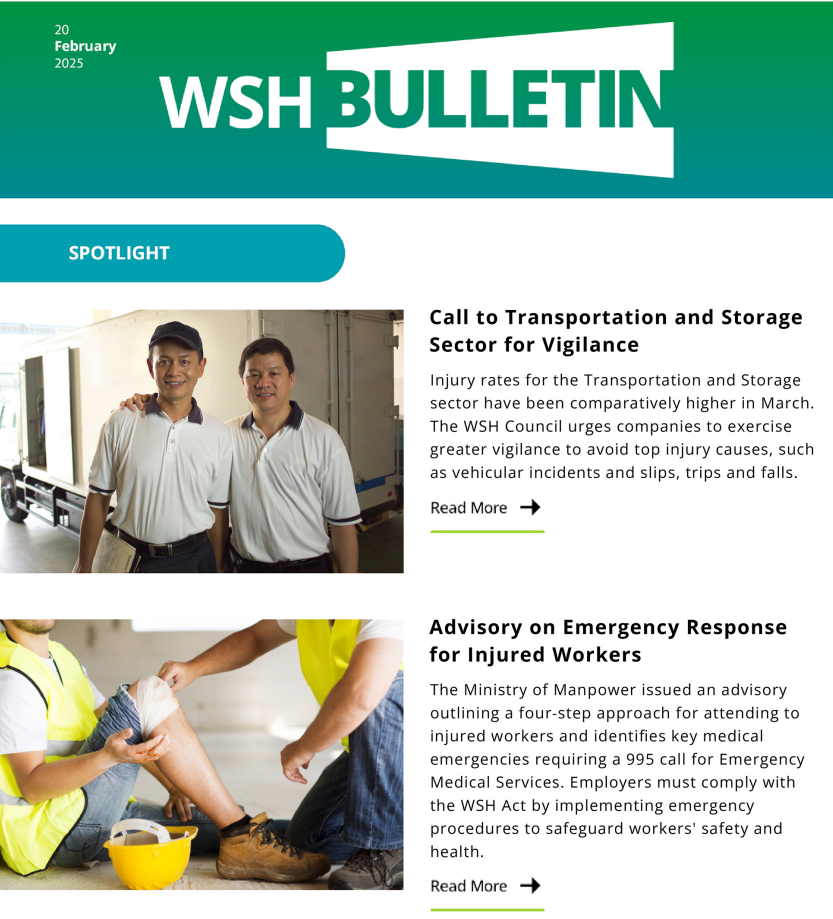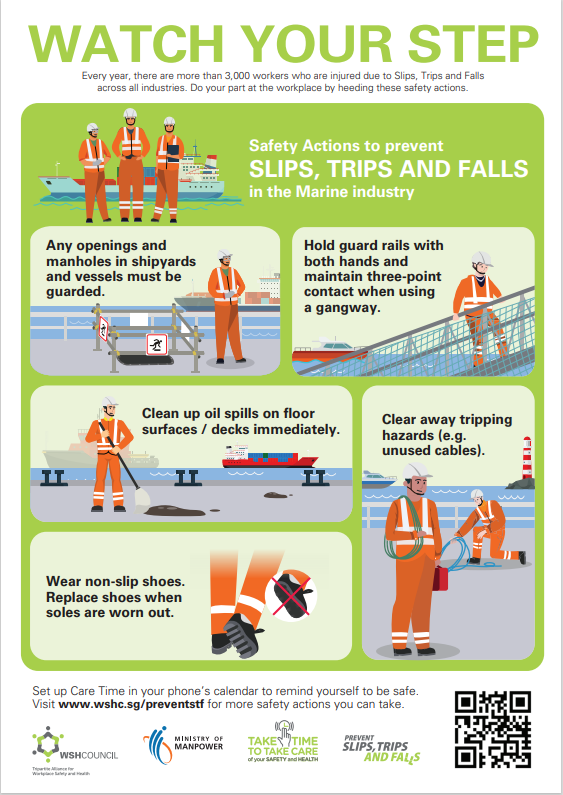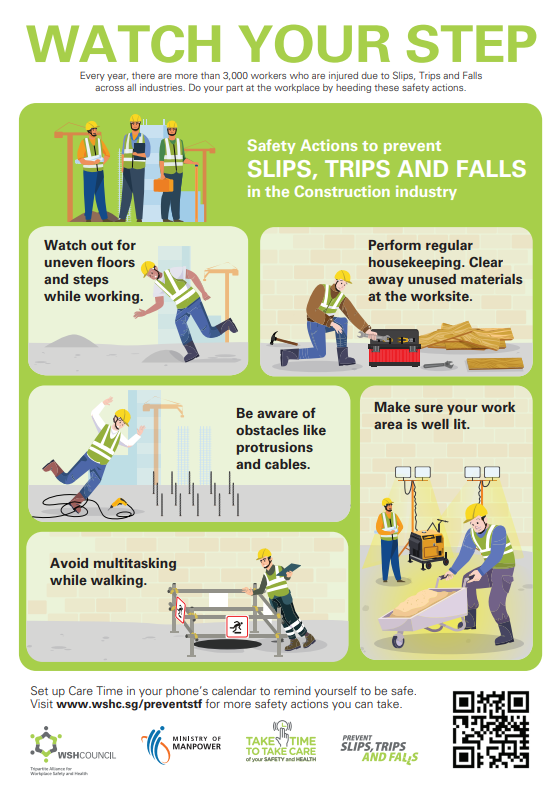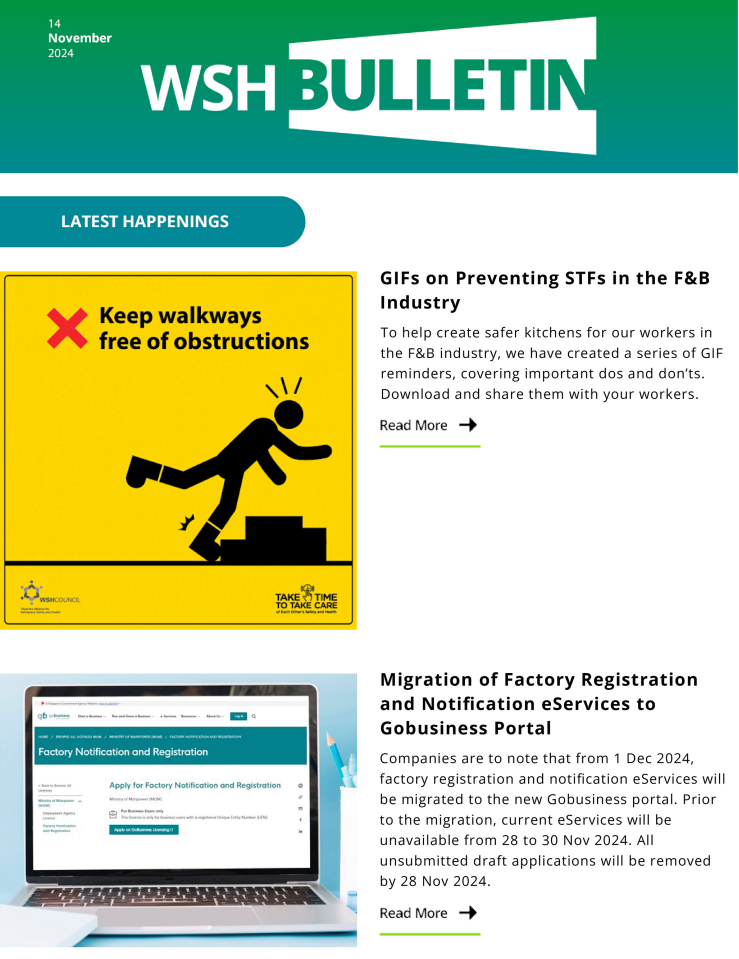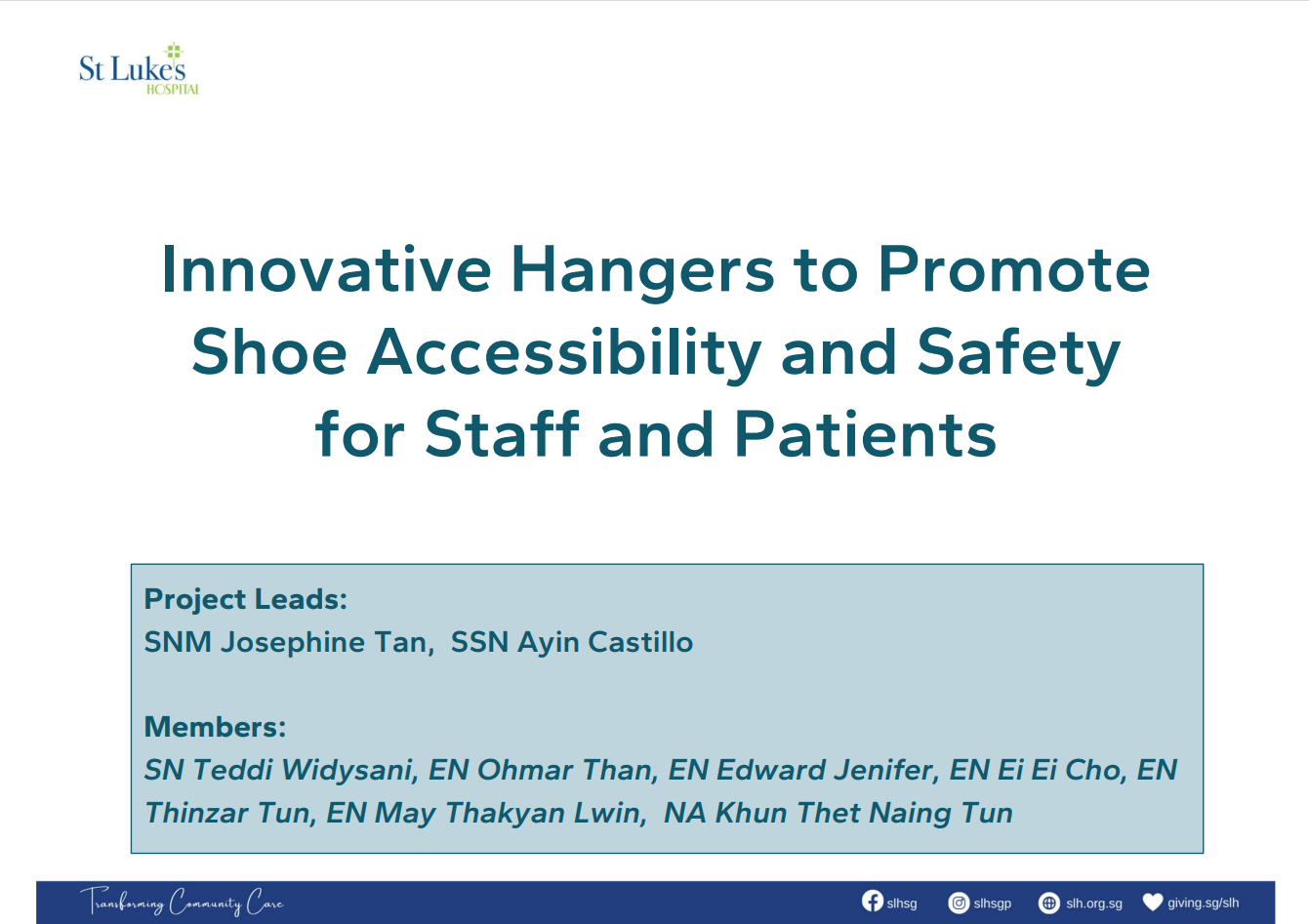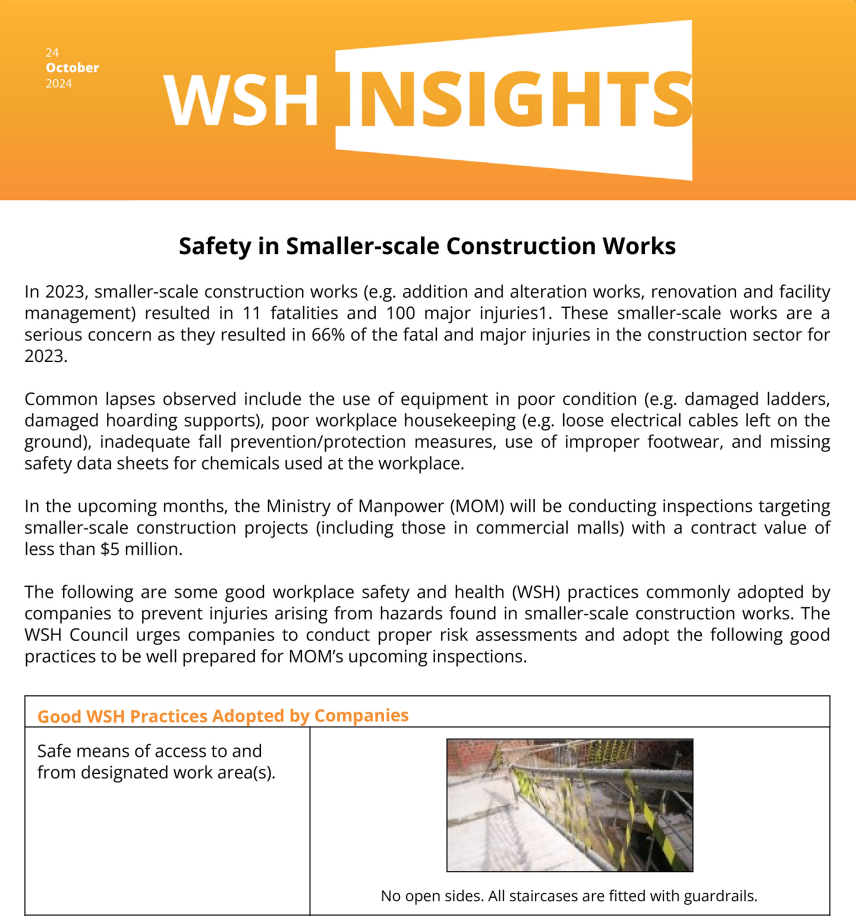Preventing Slips, Trips and Falls
Learn what you can do to prevent and control slip, trip and fall hazards in the workplace.
Slip, Trip and Fall Hazards
Slips, trips and falls can happen in any workplace, and should not be overlooked. They can cause:
- Minor injuries such as sprains and strains.
- Broken bones due to the impact when trying to break the fall.
- Back injuries due to the impact from the fall.
- Cuts if the incident occurs near sharp objects.
- Head injuries if the person hits the head upon impact.
- Burns if the incident occurs near hot surfaces, or if the person is handling hot fluids.
- Death in more serious cases. For example, a person may slip and fall off an open side of a building if it is not barricaded.
Preventing Slips, Trips and Falls
The table below lists:
- Hazards associated with slips, trips and falls.
- Examples of risk control measures that your risk assessment team can take to minimise or eliminate the risks associated with these hazards.
|
Hazards |
Risk control measures |
|
Slippery floor (e.g. entrance of toilet) |
Place anti-slip mats or install non-slip flooring. |
|
Contaminated floor (e.g. wet or oily floors due to spills) |
Clean up the contamination or spills immediately. Place warning signs to warn of slippery surfaces (e.g. floors that have just been mopped). |
|
Unstable walking surfaces (e.g. loose floor tiles) |
Repair or replace damaged floor/tiles. Ensure periodic inspection of floors for damages and/or irregularities. |
|
Surface irregularities (e.g. curled carpet) |
Ensure carpets are taped down or designed to be anti-curl. |
|
Inadequate footwear (e.g. worn-out shoes) |
Wear covered shoes with proper soles (e.g. non-slip work shoes). |
|
Obstacles within a walkway (e.g. boxes, protruding objects, wires) |
Keep walkways and access ways free of obstacles. |
|
Changes in floor elevation (e.g. steps, kerbs) |
Mark kerbs and steps in bright colours (e.g. using luminous tape). |
|
Lack of handrails on staircases and slopes |
Install handrails and advise employees to hold on to them when travelling up or down. |
|
Poor workplace housekeeping |
Keep floors and stairs clean and dry as much as possible. |
|
Insufficient lighting |
Check work areas and staircases to ensure that they are well-lit. |
|
Distractions (e.g. using a handphone while walking) |
Advise employees not to use their handphones while walking. |
|
Carrying of bulky objects while walking |
Advise workers to use the lift when carrying bulky objects. |
Employer's Role
You must:
- Conduct Risk Assessments (RA) to eliminate or minimise slip, trip and fall risks.
- Maintain a safe work environment (e.g. by selecting the right type of non-slip flooring and providing sufficient illumination at the workplace).
- Provide employees with personal protective equipment (e.g. non-slip work shoes), training, instruction and supervision for relevant work activities.
To improve workplace practices, you should also:
- Establish clear standards for workplace housekeeping and set an expectation for employees to maintain them. Refer to the WSH Guidelines on Workplace Housekeeping for more information.
- Conduct routine workplace inspections to confirm that all hazards have been addressed, and to ensure that your risk control measures have been effectively implemented.
- Encourage employees to report near-miss incidents so that you can prevent future accidents.
- Encourage employees to submit ideas on slip, trip and fall prevention through a WSH staff suggestion scheme.
Employee's Role
You must:
- Adhere to safe work procedures and instructions.
- Not endanger yourself or others with unsafe behaviour (e.g. running across a wet floor or using a handphone while walking down the stairs).
- Use personal protective equipment (e.g. non-slip work shoes) provided by your company.
To improve workplace practices, you should also:
- Clean up all spills promptly.
- Keep walkways and staircases free of obstacles.
- Keep the floor in the work area dry, clean and free from clutter.
- Tape down power cords or cables to prevent tripping.
- Report any hazards you spot (e.g. damaged floor tiles, curled mats), and place a warning sign to alert others before the hazard is removed.
- Report all near misses and accidents promptly to your employer.
- Submit suggestions on slip, trip and fall prevention.
For More Information

